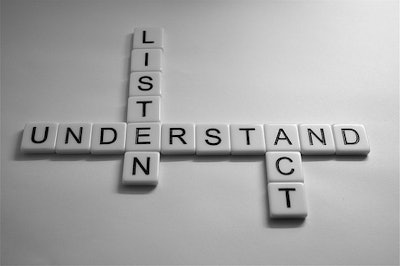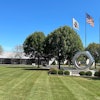
Leaders spend about 80% of their time listening to others, yet often fail to pay attention to what is actually being said. For many, it is only hearing what others say without truly understanding or comprehending it.
Effective listening depends upon the ability to identify and understand specifically what others are saying. This involves understanding their pronunciations, grammar, vocabulary, and most of all, grasping the real meaning behind what is being said. Full understanding is essential to gathering the necessary information to make a proper evaluation of assumptions, needs and concerns. Inappropriate or ineffective listening can produce communication problems.
Leaders need to apply specific techniques to enhance their active listening skills when dealing with other individuals. Active and effective listening generates an ongoing dialogue between individuals. The main idea behind active and effective listening is to get the other individual to actively participate in the process.
Listening can range from a minimum level, which is hearing but not thinking about what is being said, to the maximum level, which includes actively evaluating and applying what is being stated and understood.
To actively listen, leaders must learn to focus their attention on all elements of the conversation. This includes the tone, method of imparting their message and their personal perspective. Moving the communication process forward depends on the understanding of their message in a clear and concise manner.
While listening, leaders must realize the difference between focusing on what is actually being communicated and what is being verbally said. As they actively listen, leaders must compare this new information with what is already known, including individual issues and the concerns that are being raised.
There are some preparation techniques that can assist leaders to become a more effective listener, including:
Eliminate Personal Bias
Many individuals have the tendency to prejudge issues and concerns or make false assumptions about various situations and problems surrounding needs and concerns based upon a personal bias. These opinions blind many to the other person's point of view, which needs to be understood in order to move the communication process forward. While listening individuals should be taking the time to develop pertinent questions to expand upon the information shared.
Focus Full Concentration
Leaders should focus their attention on what is being said, ignoring all distractions. Listening allows them to compare what is being said to what is already known in order to determine how the new information applies to the situation. During pauses in the conversation, they should ask themselves, "Is this information accurate?" and, "Is it relevant?" Doing this helps keep the information that is important secure in their mind and available to reference as needed.
Focus on Key Points and Major Facts
Active listening does not mean individuals should never ask a question to clarify what is not completely understood. Many issues and concerns include various viewpoints and perspectives. If differing perspectives do surface during a conversation, leaders must be certain they understand all points of view. Listening offers them the necessary space and time to accomplish this.
Effective Listening Techniques
The following techniques can be applied to enhance active listening skills:
· Leaders should clear their minds of all outside distractions before meeting with the other person, be it a customer, associate or employee.
· They should listen carefully to the other person's initial remarks or statements. These generally offer clues to their primary concerns, problems and issues. Leaders should take careful mental notes as to which ones are emphasized.
· Leaders should carefully listen for major issues and the key indicators of what the other person's expectations are as they relate to their business, prioritize, and address them at the appropriate time during the conversation.
· Leaders should carefully observe the other person's verbal and non-verbal cues including his or her voice, eye contact, gestures and attitude. They should compare them at various points during the entire conversation as new messages, data or facts are conveyed. These specific communication signals indicate whether it is safe to move forward or time to readdress a particular point.
If you are seeking proven expertise and best practices effective communications tactics, strategies and techniques to train or educate your employees to solve problems and improve their performance in this area, refer to Improving Communication in the Workplace: Pinpoint Leadership Skill Development Training Series. Click here to learn more.
Cover photo courtesy of highersights.






















